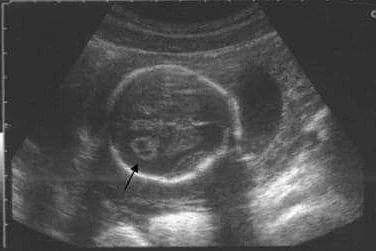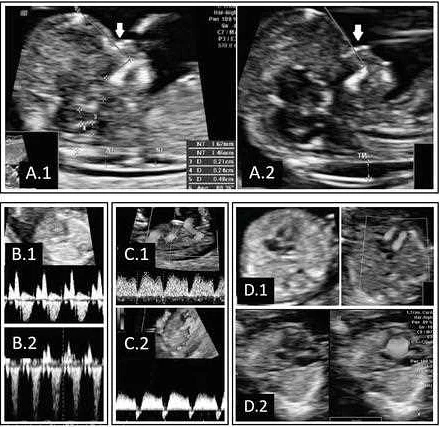Down syndrome detection rate in St. Petersburg: Only 60% identified through ultrasound screening
Содержимое
Learn about the low detection rate of Down syndrome through ultrasound screening in St. Petersburg, with only 60% of cases being identified. Find out more about the importance of early detection and the implications for families and healthcare providers.
Down syndrome is a genetic disorder caused by the presence of an extra chromosome 21. It is one of the most common chromosomal abnormalities, affecting approximately one in every 700 babies born worldwide. While prenatal screening and diagnosis have improved over the years, a recent study conducted in St. Petersburg has revealed that current ultrasound screening methods only detect around 60% of Down syndrome cases.
The study, published in the Journal of Prenatal Medicine, analyzed data from over 10,000 pregnancies in St. Petersburg. It found that while ultrasound screening is commonly used to identify potential birth defects, including Down syndrome, it is not as effective as previously thought. In fact, the study showed that many cases of Down syndrome were missed by ultrasound screening, leading to missed opportunities for early intervention and support for affected families.
These findings are concerning, as early detection of Down syndrome is crucial for parents to make informed decisions about their pregnancy and receive the appropriate medical care. With the current ultrasound screening methods being less reliable than expected, it highlights the need for further research and improvement in prenatal screening techniques.
Overall, this study sheds light on the limitations of current ultrasound screening methods for identifying Down syndrome and emphasizes the importance of continued research and development in this field. Improving the accuracy and reliability of prenatal screening is essential to ensure that families affected by Down syndrome receive the support and care they need from the earliest stages of pregnancy.
Down syndrome: Challenges in prenatal diagnosis
Prenatal diagnosis is a crucial step in ensuring the well-being of both the mother and the unborn child. The ability to detect genetic abnormalities such as Down syndrome before birth allows parents to make informed decisions about their pregnancy and plan for the future.
However, there are several challenges that healthcare professionals face when it comes to diagnosing Down syndrome prenatally. One of the main challenges is the accuracy of screening tests. While ultrasound screening is commonly used to identify potential abnormalities, it is not always able to detect all cases of Down syndrome. In fact, studies have shown that only 60% of pathologies associated with Down syndrome are detected through ultrasound screening in St. Petersburg.
Another challenge is the timing of prenatal diagnosis. Detecting Down syndrome early in pregnancy allows parents to have more time to consider their options and make necessary arrangements. However, some screening tests can only be performed at specific stages of pregnancy, limiting the window of opportunity for diagnosis.
Furthermore, the emotional impact of a Down syndrome diagnosis can also present challenges for expectant parents. The news of a genetic abnormality can be overwhelming and may require additional support and counseling to navigate through the decision-making process.
It is important to address these challenges and continue to improve prenatal diagnosis methods for Down syndrome. This can be achieved through ongoing research, advancements in screening technologies, and increased awareness among healthcare professionals and expectant parents.
| Accuracy of screening tests |
| Timing of prenatal diagnosis |
| Emotional impact on expectant parents |
Limitations of ultrasound screening

Ultrasound screening is a widely used diagnostic tool for identifying Down syndrome in unborn babies. However, it is important to recognize that this screening method has its limitations.
Firstly, ultrasound screening can only detect certain physical markers and abnormalities associated with Down syndrome. It cannot provide a definitive diagnosis. This means that there is a possibility of false negatives, where a baby with Down syndrome may not be identified during the screening process.
Secondly, the accuracy of ultrasound screening can vary depending on the expertise of the technician performing the scan. Mistakes or misinterpretations can occur, leading to inaccurate results. It is crucial for the screening to be carried out by trained professionals who have experience in identifying the specific markers of Down syndrome.
Additionally, ultrasound screening is generally performed during the second trimester of pregnancy, around 18-22 weeks. This means that any abnormalities that develop later in the pregnancy may not be detected. Early detection of Down syndrome is important for parents to make informed decisions about the future care and support of their child.
It is also worth mentioning that ultrasound screening is not 100% accurate and may result in false positives, where a baby is mistakenly identified as having Down syndrome. This can cause unnecessary anxiety and stress for expectant parents.
In conclusion, while ultrasound screening is a valuable tool in the detection of Down syndrome, it is important to be aware of its limitations. Expectant parents should consult with their healthcare providers to fully understand the benefits and constraints of ultrasound screening, and to consider additional diagnostic methods if necessary.
Importance of early detection
Early detection plays a crucial role in managing Down syndrome and ensuring the well-being of individuals with this condition. Detecting Down syndrome during pregnancy allows expecting parents to make informed decisions and seek appropriate medical care.
There are several benefits to early detection:
- Preparation: Knowing about the presence of Down syndrome early on allows parents to prepare emotionally, mentally, and physically for the challenges that lie ahead. They can educate themselves, seek support, and make necessary arrangements to provide the best care for their child.
- Access to healthcare: Early detection enables parents to connect with healthcare professionals who specialize in managing Down syndrome. This allows for early intervention programs, therapies, and medical treatments that can improve the child’s overall development and quality of life.
- Educational planning: Identifying Down syndrome early on provides parents with the opportunity to plan for their child’s education. They can explore educational resources, find suitable schools, and make decisions about the types of support services that will best meet their child’s needs.
- Support networks: Early detection allows parents to connect with support networks and other families who have children with Down syndrome. This can provide emotional support, practical advice, and a sense of community for parents and their child.
- Empowerment: By detecting Down syndrome early, parents can actively participate in their child’s healthcare decisions and advocate for their needs. This empowers them to ensure that their child receives appropriate care and support throughout their life.
Overall, early detection of Down syndrome offers numerous advantages for both the child and the family. It allows for proactive planning, access to appropriate healthcare, and the opportunity to connect with support networks. By emphasizing the importance of early detection, we can work towards improving the well-being and quality of life for individuals with Down syndrome.
Advanced diagnostic techniques

While ultrasound screening has become a common practice in detecting Down syndrome during pregnancy, it is not foolproof and can miss around 40% of cases. In order to improve accuracy and provide more comprehensive information, advanced diagnostic techniques have been developed.
One such technique is chorionic villus sampling (CVS), which involves taking a sample of cells from the placenta. This procedure is usually performed between 10 and 13 weeks of pregnancy and can provide more accurate results than ultrasound screening alone. CVS carries a small risk of miscarriage, but it can detect Down syndrome with a higher level of certainty.
Another advanced diagnostic technique is amniocentesis. This involves taking a sample of amniotic fluid, which surrounds the fetus, and analyzing the cells for genetic abnormalities. Amniocentesis is typically performed between 15 and 20 weeks of pregnancy and can provide more accurate results than ultrasound screening. However, it also carries a small risk of miscarriage.
Genetic testing, such as non-invasive prenatal testing (NIPT), is another advanced diagnostic technique that has gained popularity in recent years. NIPT involves analyzing a sample of the mother’s blood for fetal DNA. This test can detect genetic abnormalities, including Down syndrome, with a high degree of accuracy. However, it is more expensive than ultrasound screening and is not always covered by insurance.
Overall, while ultrasound screening is a useful tool for detecting Down syndrome during pregnancy, it is not infallible. Advanced diagnostic techniques, such as CVS, amniocentesis, and genetic testing, can provide more accurate and comprehensive information, helping parents make informed decisions about their pregnancy and the future health of their child.
| Chorionic villus sampling (CVS) | 10-13 weeks | High | Small |
| Amniocentesis | 15-20 weeks | High | Small |
| Non-invasive prenatal testing (NIPT) | Varies | High | Negligible |